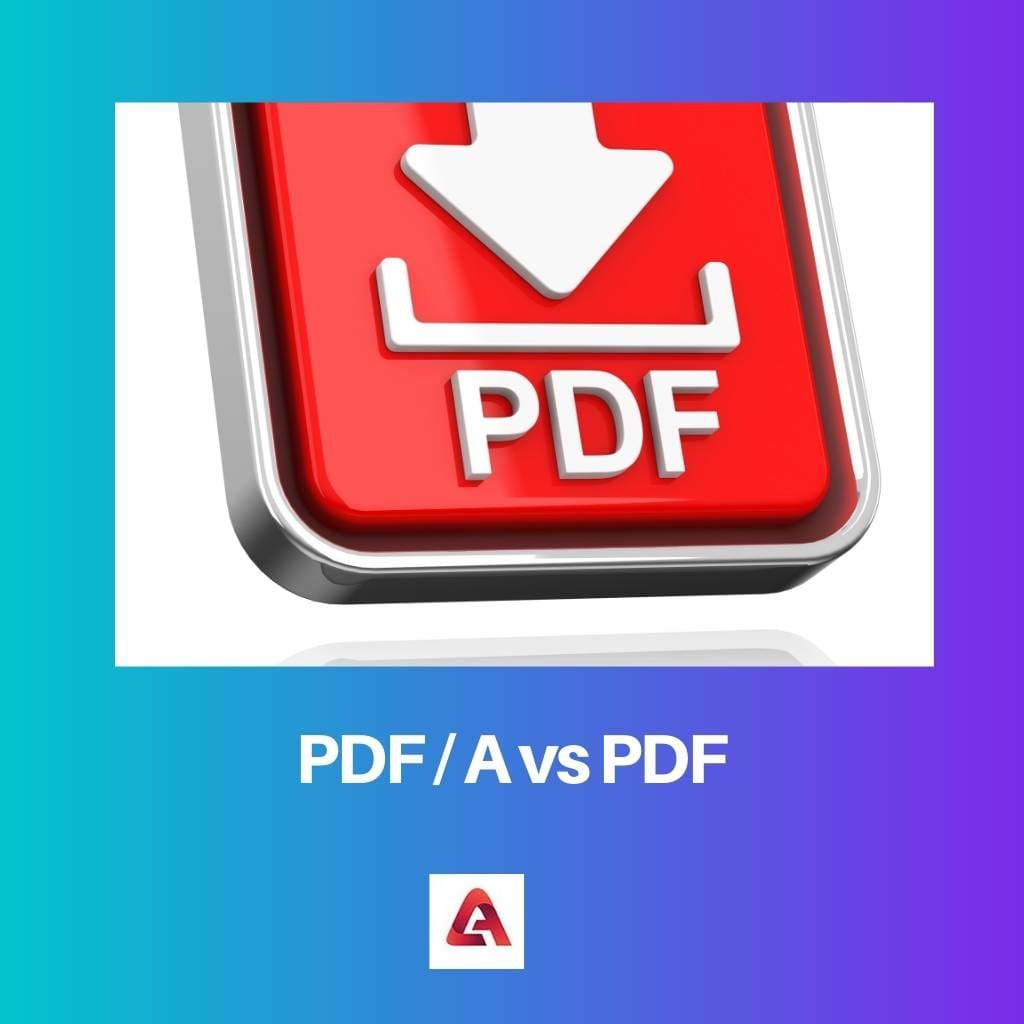The rolling out of PDF by Adobe has been proven to be one of the essential document formats among many. Not only it’s open to anyone, but it also accounts for several various items inside to enhance the experience. However, there are things in which PDF / A differs from PDF.
Key Takeaways
- PDF/A is a format for the long-term archiving of electronic documents, ensuring their readability and usability over time.
- Conversely, PDF is a general-purpose file format used for sharing and viewing electronic documents.
- PDF/A has stricter requirements than PDF, such as using embedded fonts and prohibiting certain types of content from ensuring long-term preservation.
PDF / A vs PDF
The difference between PDF / A and PDF is that the first one is meant for archiving documents that can be retrieved when needed. It’s a particular type of PDF that allows this kind of format. In contrast to that, a standard PDF doesn’t allow archiving documents.

PDF / A is a subset of PDF used to archive important documents and files. This type of document ensures that the content in this mode remains the same even if it’s retrieved after a long time by setting several restrictions and rules on the paper.
PDF stands for portable document format, a mode to save a file or pages into this format. One critical use of PDFs is that it’s used in digital books, allowing readers to go through the content from anywhere around the world.
It’s the world’s most accessed and used format, which ensures no loss of content irrespective of the system using the PDF.
Comparison Table
| Parameters Of Comparison | PDF / A | |
|---|---|---|
| Definition | PDF / A is a particular type of document subset of PDF. | PDF supports this particular format and is the mother of PDF / A. |
| Archiving | The documents in this format can be archived. | The standard format doesn’t allow for archiving documents. |
| Graphical content | It doesn’t allow audio, video, and executable content. | It does allow graphical content like audio, video, and executable content. |
| Embedding | It needs that fonts and graphics to be embedded into the file. | This doesn’t need to do these. |
| Encryption | This doesn’t allow the encryption of files and documents. | PDF allows encryption. |
What is PDF / A?
This method is the best when you need to perform particular tasks like embedding or archiving since it’s the subset of PDF and a specific type of PDF. PDF /A is a kind which allows the user to save the data and archive the document for long-term purposes.
If the data is retrieved after a long time, this mode ensures zero loss of content and maintains the format as it was saved.
Several other functions are also allowed in PDF /A, like picture insertion, given that they are embedded accompanied by providing the fonts to be used in rendering the documents.
In the general case, this method doesn’t allow the file to refer to any other external source, as there is no knowing whether the recourse would exist or not.
The attributes enhance these kinds of files as an advantage of reproducibility. When these files are copied, they will contain the same elements as the original. It doesn’t allow subsequent changes or modifications. So this robustness ensures the originality of the content.
If we talk about the encryption mode, PDF/A doesn’t allow encrypting of the data. Encryption is one of the main parts a company wants to secure confidential files and documents. Only the permitted person or the employees can access encrypted files.
What is PDF?
In 1991, the co-founder of Adobe launched the digital paper revolution. This change ensured that the copies you have in your hand could be transferred digitally to anyone worldwide. The name he gave to the project was Camelot. Later in 1992, it was renamed PDF.
It’s the most used format in the world. The level of trust companies have in the form is bold and robust. PDF encompasses various attributes to ease the person. Standardized as ISO 32000, it’s a file format with text formatting and image insertion.
PDF can have a variety of content. It can have flat text graphics, interactive elements like annotations, form fields, layers, media content, 2-D and 3-D objects using U3D and PRC, and other data formats.
Also, PDF allows users to encrypt, do signatures digitally, and attach files and metadata to enable workflow.
It’s saved as extensions such as “.PDF”. A PDF combines text, vector graphics, and Bitmap graphics. Also, it allows many other types of things in the files. It is easy to operate and also an open-source item.
Right now, people involved in document work know the need and requirements of this type of format.

Main Differences Between PDF / A and PDF
- PDF /A is a special kind of format system PDF that allows users to archive files and documents, while a standard PDF does not allow archiving.
- PDF /A needs embedding of graphical contents like audio, video, and references externally, while a standard PDF does not need so.
- PDF /A cannot be encrypted, which makes it an insecure document format, while normal PDFs can be encrypted.
- PDF /A is a subset of PDF, while PDF is not a subset of anyone.
- The data in PDF /A remains the same if we retrieve the file after an extended period, while a normal PDF does not assure you of this part.


